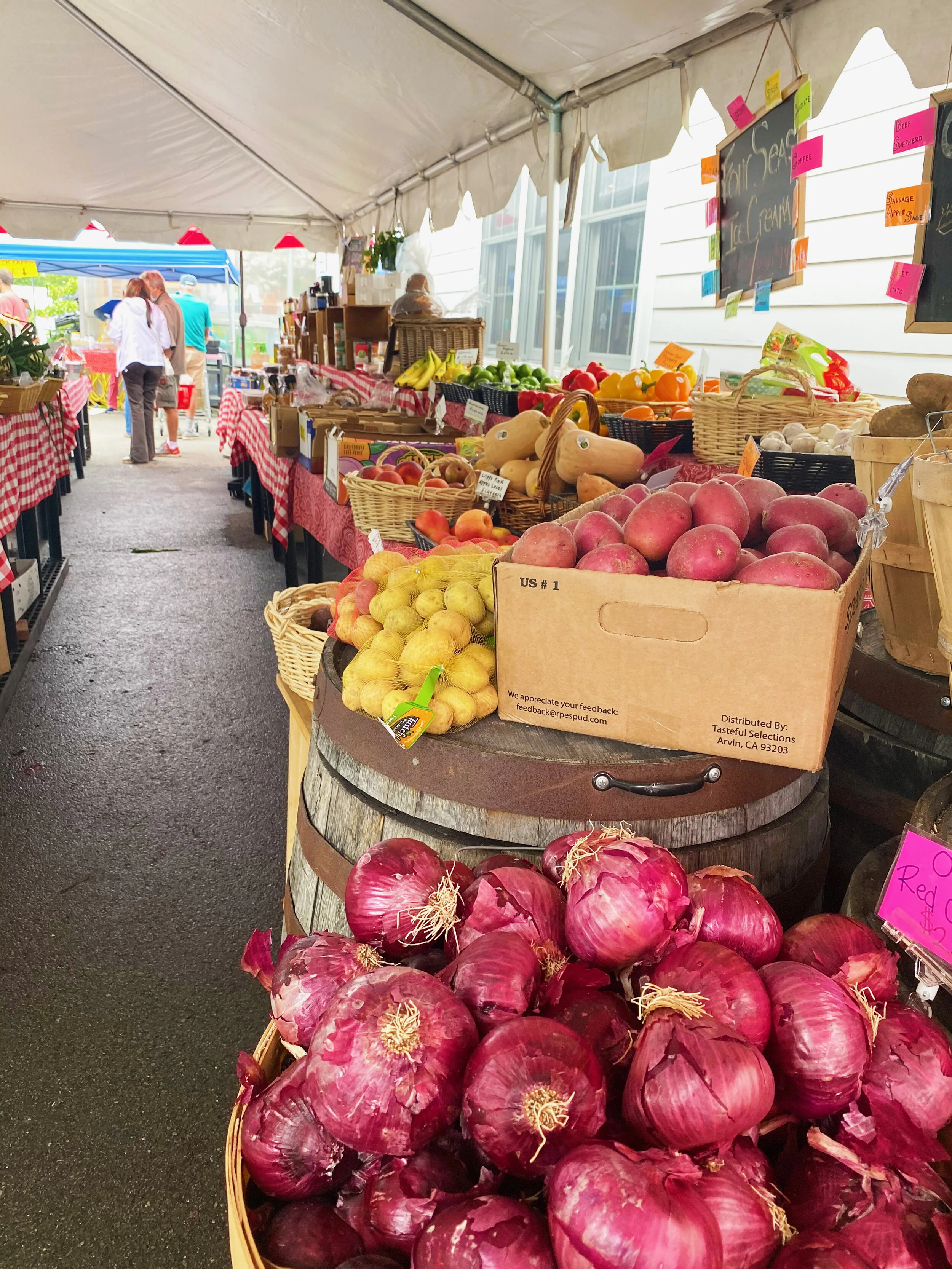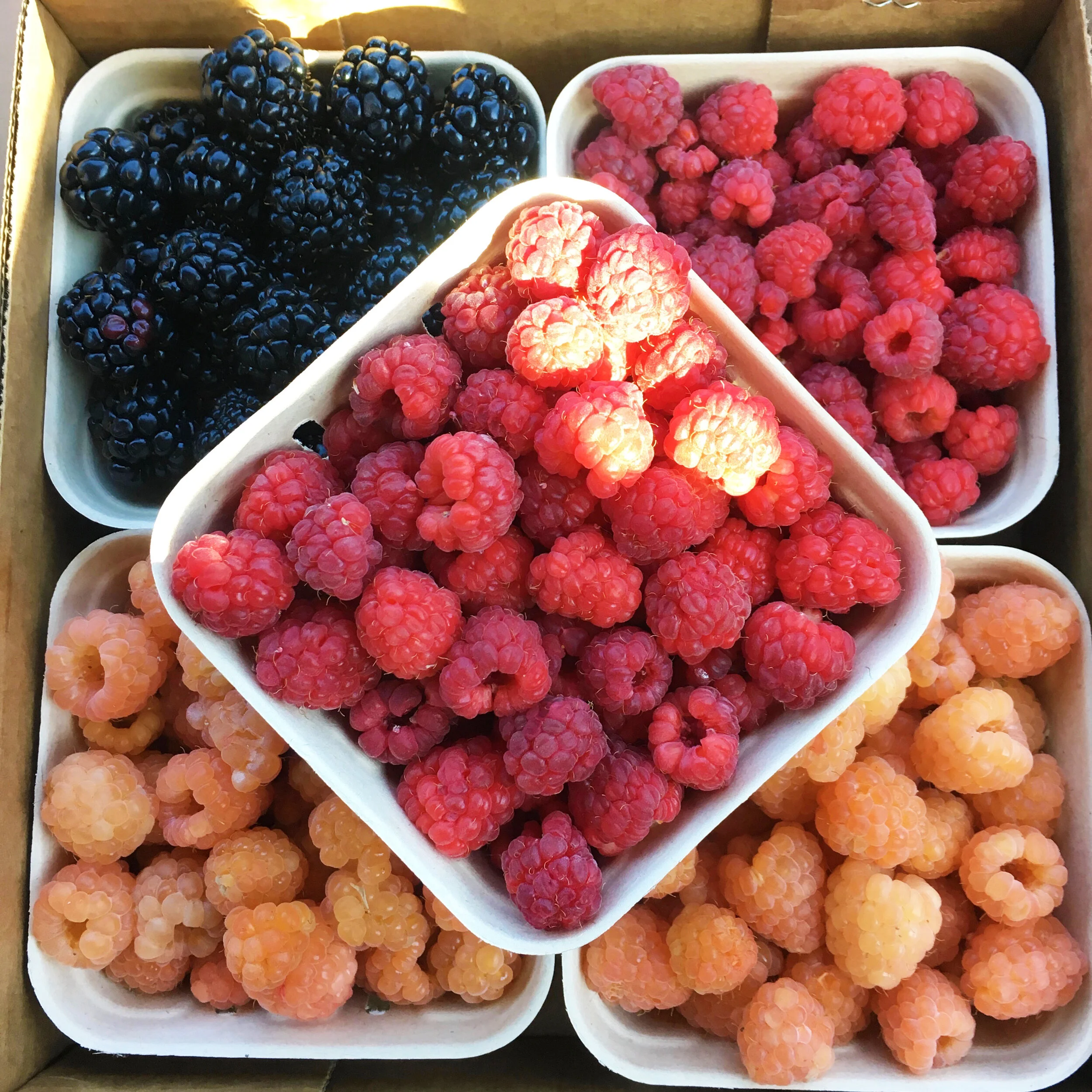Farmers Markets are the Heart of Local Food Systems
Before the pandemic, Farmers markets always felt like a fun social thing to me. In college we’d head down to the Ithaca Farmers market to grab lunch from a food vendor and maybe a handful of veggies or flowers—mostly for the photo op. Actually buying all of my groceries at a farmers market felt out of reach for me. It felt expensive, time consuming, inconvenient—a luxury limited to wealthy white people. That perception still dominates throughout the nation, but there are a lot of myths tied up in it that just aren’t true. In fact, the pandemic has actually been a catalyst for changing perceptions around local food, implementing more incentives for low-income shoppers, and showcasing the resilience of local food systems—with farmers markets at the center.
According to price comparisons by the Northeast Organic Farming Association, food prices at farmers markets were, on average, actually the same as those at standard grocery stores. And when it comes to organic produce? Farmers markets are actually cheaper on average. In addition to the base price comparisons, farmers market incentive programs can be a really powerful tool for helping low income community members shop at farmers markets, and getting more money into local farmers' hands. Most states have “SNAP Match” or “Double Up Food Bucks” programs that allow patrons of the market to get extra purchasing power if they are shopping at a farmers market with their SNAP (“food stamps”) card. As a past SNAP recipient, I have seen the power of this first hand. I could spend $10 of my monthly SNAP allocation and get $20 worth of produce, thanks to grants that increase equity at markets. While that extra $10 makes a big difference in the shopper’s life, it is also an extra $10 of goods purchased from the farmer. In 2017 alone, SNAP participants spent more than 24 million dollars at farmers markets thanks to these incentive programs.
So, who are these farmers? Farmers markets are a natural incubator for new farmers without access to big contracts. Many small food ventures—farmers, vendors of value added products, food carts—start out as farmers market vendors until they are able to grow to more conventional markets. What's more, the ability to market directly to consumers with a low cost of entry to the market is a great way to create a more resilient system with lots of small farms that are able to sustain themselves. Many farms and businesses never grow out of the farmers market model because they don’t need, or want, to.
Raspberries and blackberries from the Rogue Valley Growers Market in Ashland, OR.
Farmers markets also offer farmers a more resilient option in comparison to big contracts, as demonstrated in the food system meltdown at the beginning of the pandemic. Many farmers with contracts with large grocery and restaurant chains lost all of their income when restaurants shut down. While farmers markets have had their own slew of challenges during the pandemic, they have continued to innovate and have been more nimble than their big-contract counterparts. While some have continued to operate in safe, socially-distanced ways, others have moved to pre-order and pick-up box options to help customers continue to have access to the bounty their markets offer.
While there are lots of advantages to being a vendor at a farmers market, markets have historically been particularly white-dominated spaces, nationwide. Farmers markets aren’t always equitable in vendor access, and Black Americans have historically been denied the same level of access and support as white vendors. As recently as last month, reports of black vendors being denied from major farmers markets have continued to surface. Over the past few months many farmers markets have come out with anti-racism statements, which can be a great step towards progress, but are hollow if not backed up with strong policy change as well. Those markets who are implementing policy changes include reducing vendor fees for BIPOC farmers and vendors, creating priority spots for vendors in popular markets, and working on increased representation within market leadership.
Due to the overwhelmingly white demographics of many markets, some BIPOC folks prefer to opt out of farmers markets by doing CSA programs, or by starting their own markets. There have been amazing examples of this in neighborhoods nationwide, most recently with a new BIPOC-led market in Portland, Oregon—the Come Thru market was founded in partnership with the Black Food Sovereignty Coalition, also based in Oregon. The founder of the market, Allinee “Shiny” Flanary, says, “We wanted a BIPOC-led and centered market that also centered BIPOC consumers to expose folks to new kinds of food.” The demand for this kind of change is self-evident—the line has been around the block for weeks. This small example showcases the importance of BIPOC food entrepreneurs taking charge and leadership of spaces where they are vending as well as creating spaces that center around BIPOC consumers and their experience.
The systemic racism that has surrounded access to farmers markets is connected to a handful of glaring issues within the “field” of farmers market operation. Running a farmers market is a lot of work. Farming is a lot of work. Farmers market operators are primarily volunteers, and farmers market organizations themselves are usually non-profits. Someone with spare time and energy and access to resources is required to run a market. Additionally, markets can only run in areas that support them—a reality made evident during the pandemic, when some areas classified farmers markets as “essential” (like a grocery store), while others were shut down. But even before the pandemic, all markets have to operate within city codes and are subject to many rules and regulations. Markets run by BIPOC folks have been systematically targeted in policy and regulations in many areas in order to maintain areas of food apartheid. In order to allow these markets to continue to provide our communities with the essential food that they need, these markets need far more support when it comes to finances and policy.
What can you do to support farmers markets and local food systems?
Stunning mushrooms from the Ithaca Farmers Market in Ithaca, NY.
Buy food from farmers markets in your neighborhood. Primarily, shopping and supporting vendors at your market, but even just attending the market to buy lunch and posting about how great it is on social media can help attract others to the market. Consider also donating money to cover market operation costs. PPE alone can cost hundreds of dollars a week for markets in addition to costs they were covering before the pandemic as well.
Is there no market? Consider networking with people who work with food in your area, and figure out how to start one. Some markets are massive with hundreds of vendors and run weekly, but others operate monthly with just a few vendors. Even small markets add to the resilience of local food systems, wherever they are.
Share your market support with your local representatives and policy makers. Give them a call and help them understand that it is a priority for their constituents.
This week is National Farmers Market Week, an annual celebration of all of the benefits of farmers markets for local food systems, small farmers, and communities. This year the focus is on the resilience of farmers markets as they work through challenges presented by the pandemic. You can celebrate by sharing on social media why you shop at farmers markets, and amplify the voice of your local market. The celebration is spearheaded by the Farmers Market Coalition, a national organization that advocates for farmers markets from coast to coast. Check out their work on their website.
References:


